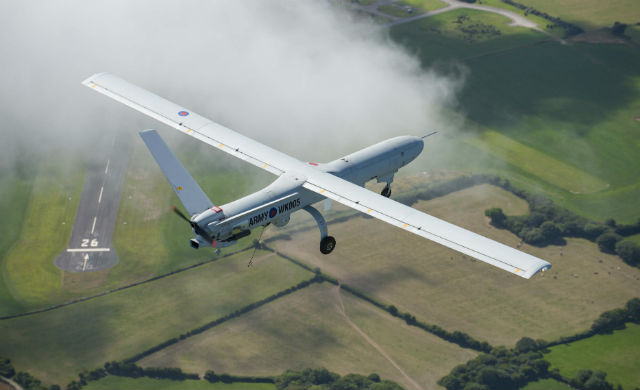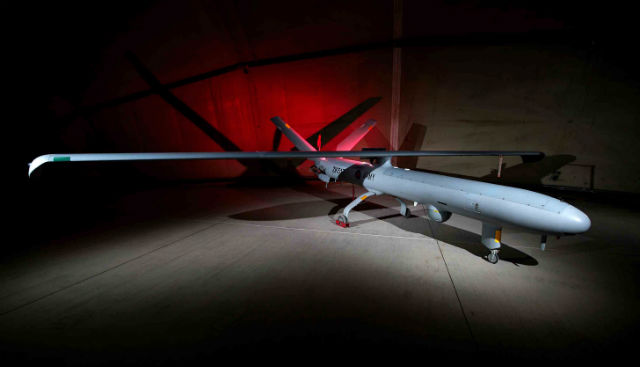The British Army’s late-running Watchkeeper unmanned air system has cleared a major hurdle on its way to delayed service introduction, with the UK Military Aviation Authority (MAA) having approved a statement of type design assurance.
Watchkeeper partner Thales UK announced the milestone on 7 October, describing it as “a key component of the process that allows the Ministry of Defence to continue towards the initial release to service”. The step means that “the Watchkeeper air vehicle and software has reached an acceptable level for design safety and integrity to meet the current stage of the system’s development,” it adds.

Thales UK
With this MAA approval now in place, Thales/Elbit Systems joint venture UTacS and the army will next seek to secure military type certification for the Watchkeeper before it can be introduced by Royal Artillery batteries.
Army officials speaking at September’s DSEi exhibition in London revealed that the service was expecting to secure release-to-service approval before the end of this year, more than three years behind the original introduction plan.
The MoD in mid-September announced that an interim intelligence, surveillance, target acquisition and reconnaissance service being provided by Thales in Afghanistan using Elbit’s Hermes 450 UAS (below) has passed 70,000 flying hours. Operated from Camp Bastion in Helmand province since 2007 under an urgent operational requirement deal, air vehicles are currently organised in five “task lines”. Roughly 1,460 flights per year are currently being conducted with the fleet, the MoD says.

Crown Copyright
Carrying an electro-optical/infrared sensor and synthetic aperture radar/ground moving target indication payload, the Watchkeeper air vehicle is an evolution of the Hermes 450 airframe.
Source: Flight International























